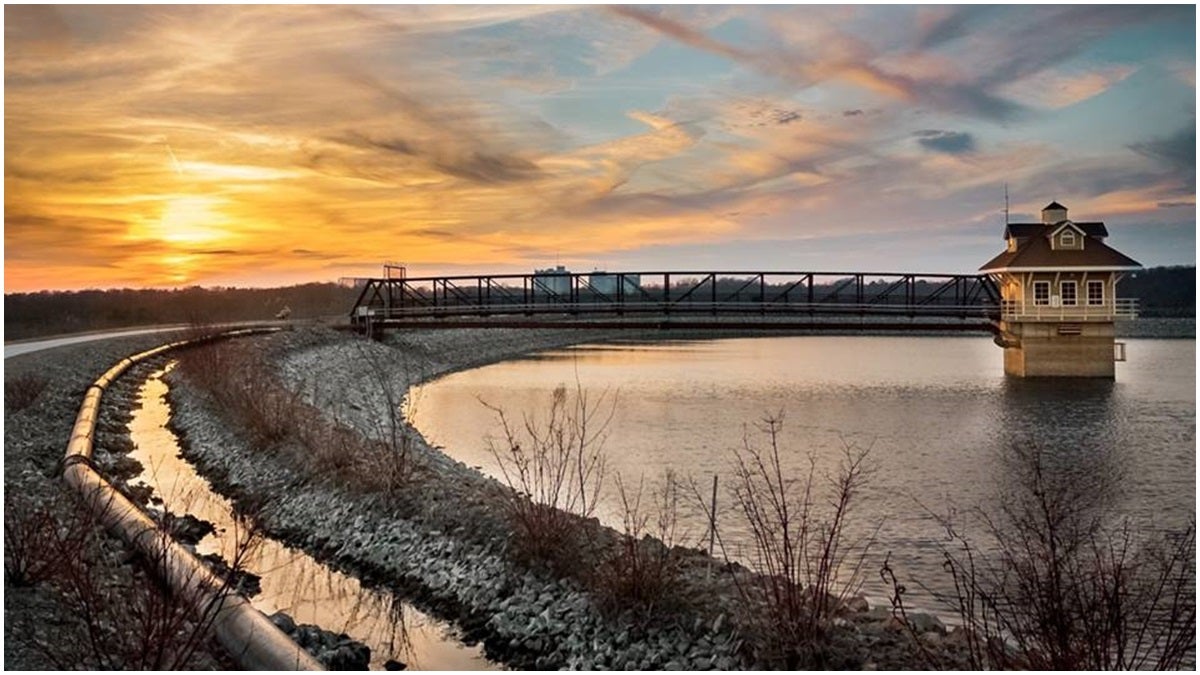Algae bloom impacts Delaware triathlon

Newark Reservoir (City of Newark Facebook photo)
A blue-green algae bloom has been identified at the Newark Reservoir, where athletes were supposed to swim as part of a triathlon this weekend.
Recent lab results indicated the bloom is at levels where recreational activities in the water need to be suspended.
“They call it blue-green algae, but it’s cyanobacteria, and what it does at certain times it can create a toxin,” said Tom Coleman, Newark’s acting city manager. “You can get the toxin on you with direct contact with the algae.”
Remediation efforts like aeration, mixing and filtering are underway, but Sunday’s triathlon will now be a duathlon, which will follow a 1.5 mile run, 14.4 mile bike ride and another run (2.6 miles).
City leaders said the schedule for the Top of Delaware Triathlon, hosted by Piranha Sports, will still follow the original itinerary:
- 8:00 a.m. – Mass Start for Duathletes
- 8:03 a.m. – Male Triathlon Registrants
- 8:06 a.m. – Female Triathlon Registrants
- 8:09 a.m. – Race with a Friend Triathlon Registrants
“We are disappointed the triathlon needs to be changed to a duathlon, but the safety and well-being of our participants is our primary concern,” said Piranha Sports CEO and race director Neil Semmel. “The duathlon course is a challenging, yet rewarding alternative and we hope those who registered for the triathlon will still join us for the event and participate in that course instead.”
While you can’t swim in it, Coleman said the city’s drinking water supply is safe because when it’s processed, the algae is filtered out. “Once we have filtered it, we oxidize it with chlorine and chlorine will break down the toxin. So once it goes through our treatment process, it’s gone.”
An algae bloom can occur in warm, still freshwater ponds and lakes and can last for a few days to several months, depending on the weather temperature. The bloom thrives off nutrients in the water, introduced via stormwater runoff.
“Unfortunately, a lot of times that water is carrying nutrients from fertilizers that people are putting on their lawns, farming activities — things like that — and once those nutrients get into the water, they act as a food source for algae blooms. So in this case, as we got into the warmer months of the summer, the algae took off once it got hot,” Coleman said. “This type of algae is hard to predict if you’ll get a bloom, or when it’ll happen and also how long it lasts once you have it.”
Algae blooms generally appear between June and October and die off as the weather turns colder, which decreases the water temperature.
The bloom has no environmental impact on visitors visiting the reservoir, however pet owners are reminded to keep animals out of the wetlands moat encircling the reservoir, as the algae levels may be harmful, if ingested.
Earlier this year, an aeration system was installed to cool the reservoir in hopes of preventing an algae bloom like this. Moving forward, Coleman said the city will look at ways to modify the mixing methods to try to further reduce the water temperature in the reservoir.
Long-term preventive measures include proper fertilization and yard work practices among homeowners and a nutrient management plan for farmers and commercial industries.
Coleman said the city will continue to visually monitor the bloom and send water samples out for lab testing until it dissipates completely.
WHYY is your source for fact-based, in-depth journalism and information. As a nonprofit organization, we rely on financial support from readers like you. Please give today.





